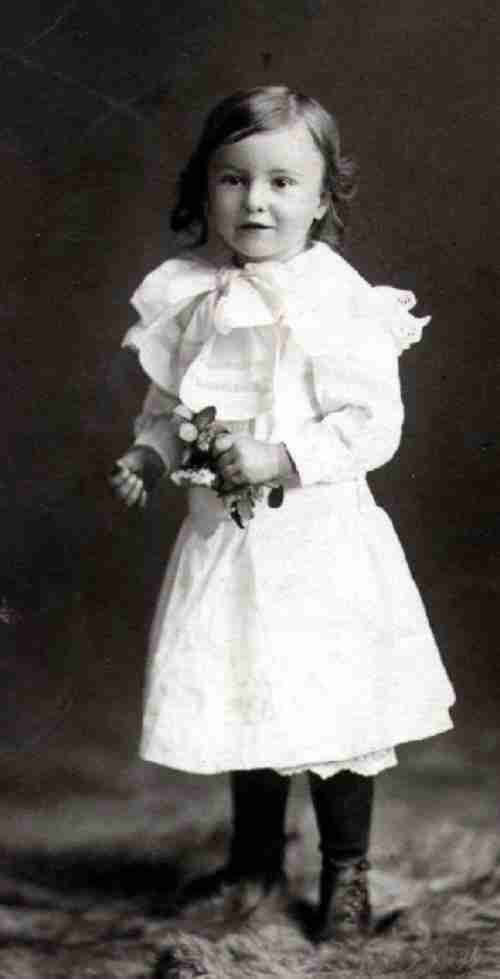
White Dresses: Ages

Figure 1.--Little boys in the 19th century commonly were dressed up in white dresses. Thr back of this card read, "Richard "Richard Conrad son of Alfred". Notice the petticoats he is wearing instead of pantalettes. This portrait was undated, but HBC estimates the 1890s. Richard look to be 2-3 years old.
|
I believe white dresses were most common for younger boys. Quite a large number of younger boys in dresses during the late 19th century had their portraits taken in white dresses. To some extent this could reflect the children being dressed up to have their portraits taken. It is much less clear what these boys may have worn at home for every day activities. Older boys were less commonly dressed in them. Such decisions, however, were up to the mother. And some older boys also wore white dresses.
Age
Younger boys
I believe white dresses were most common for younger boys. Quite a large number of younger boys in dresses during the late 19th century had their portraits taken in white dresses. To some extent this could reflect the children being dressed up to have their portraits taken. It is much less clear what these boys may have wofn at home for every day activities. Older boys were less commonly dressed in them. Such decisions, however, were up to the mother.
Older boys
Some older boys also wore white dresses. I believe that it was also common to choose white for the dress older boys as well.
Styles
Boys and girls in the early 19th century wore identically styled dresses. By the late-19th century even very young boys might wear boy styled dresses. The white dress the boy on this page wears, for example is styled very simply (figure 1). The bow and collar are exceptions to the simple styling, but are similar to what boys might wear even after breeching. Other boyish features are a belt and unimbelished straight sleeves.
Accessories
Several accessories were worn with white deesses. Some boys wore bows and fancy collars. Belts were especially popular. Petticoats and pantalettes were also worn.
Collars
Some white dresses had dresses with attached collars. Other white dresses had collars added much like a boy might wear with a Fauntleroy suit.
Bows
Some boys wore bows with their white dresses, adding a little color to their outfit. The bows were just like the ones worn with Fauntleroy suits. It was much less common for girls to wear such bows added to their dresses.
Belts
A belt was generally considered a boyish feature. They were not unknown on girls dresses, but were more common on boy dresses. They forshawdowed the bbelts worn with boys' tunic suits.
Petticoats
The younger boys in white dresses were quite likely to wear petticoats just like their sisters. Some boys also wore pabtalettes, either instead or in addition to petticoats. Petticoats must have been commonly worn by boys before breeching since one of the reasons I've seen for breeching is that "He is to old for petticoats".
Christopher Wagner
histclo@lycosmail.com
Navigate the Historic Boys' Clothing Web chronological pages:
[The 16th-17th centuries]
[The 18th century]
[Early 19th century]
[Mid-19th century]
[The 1870s]
[The 1880s]
[The 1890s]
[The 1900s]
[The 1910s]
[The 1920s]
Navigate the Historic Boys' Clothing Web dress pages:
[Pinafores]
[Ringlet curls]
[Smocks]
[Bodice kilts]
[Kilts]
[Fauntleroy dresses]
[Sailor dresses]
[Fancy dresses]
[Dresses: 16th-18th centuries]
[Dresses: Early-Mid-19th century]
[Dresses: Late-19th century]
[Dresses: Early 20th century]
[Difficult images]
[Movie dresses]
Navigate the Boys' Historical Clothing Web Site:
[Main white dress page]
[Introduction]
[Activities]
[Bibliographies]
[Biographies]
[Chronology]
[Clothing styles]
[Contributions]
[Countries]
[Boys' Clothing Home]
Created: March 27, 1999
Last updated: April 15, 2000


